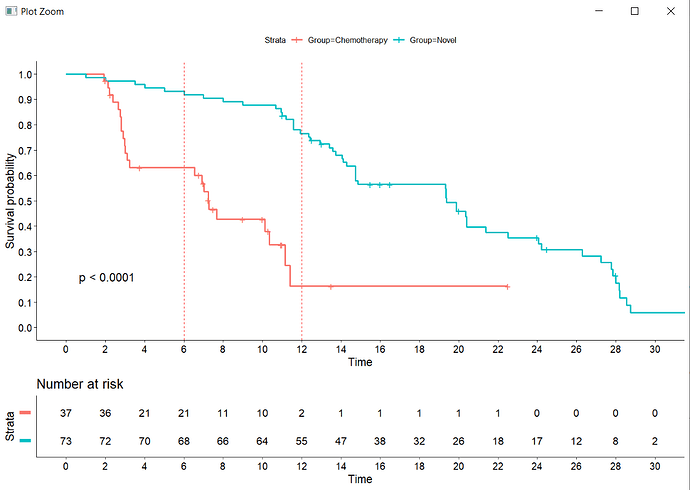Assume a Hypothetical Clinical Trial which compares the efficacy of a novel treatment to chemotherapy, using a 2:1 randomization. The results of this trial are depicted in the image below. Additionally, the overall median follow-up, as determined by reverse Kaplan-Meier analysis, is 15 months.
Based on these findings, I have several inquiries:
(1) At the overall median follow-up time of 15 months, would it be methodologically sound to report the survival probability when the number at risk for the chemotherapy group is only one, especially considering that even at 12 months, the number at risk stands at two?
(2) Are there any established guidelines or thresholds concerning the number at risk below which the reported survival probability might be considered unreliable or unrepresentative?
(3) The median follow-up times for individual groups in this dataset are 7 months for the chemotherapy group and 19 months for the novel treatment group.
(a.) Is it statistically appropriate to compute individual group median follow-up times?
(b.) Given the disparity in these follow-up times, would this influence the specific time point at which survival probability can be confidently reported for each group?
@f2harrell and esteemed experts, I appreciate your valuable input.
